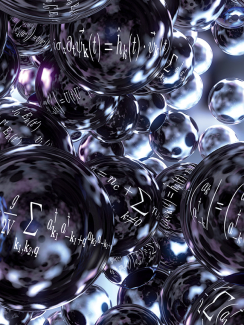In 2013, the Cornell and Jin groups created and studied an extremely strongly interacting Bose-Einstein condensate (BEC) of rubidium atoms (85Rb). This BEC was short lived and far out of equilibrium. At the time the experimentalists wondered if this new BEC could be a quantum liquid because the quantum mechanical waves of these puffed-up atoms were rubbing up against each other and sliding past one another—like atoms do in liquids we are familiar with in everyday life.
This seminal experiment captured the attention of CU Physics Professor and CTQM Fellow Leo Radzihovsky, who had been developing a theory of 85Rb for many years. Not surprisingly, Radzihovsky wanted to further develop the theory to explain what was really going on with the puffy 85Rb atoms in the new experiment. Radzihovsky and CU graduate student Xiao Yin discovered that the quantum state (phase) of the strongly interacting atoms was much wilder and crazier than anyone expected.
The quantum state of the strongly interacting BEC was neither a gas nor a liquid. Rather, it was something altogether new that had properties of both. The ability of a strongly interacting gas of 85Rb atoms to be both a gas and a liquid at the same time is purely quantum mechanical and has no analog in ordinary life.
An even more significant accomplishment was that the new theory explained why a strongly interacting BEC behaves they way it does. For example, it confirmed the experimental observation of the evolution of strongly interacting 85Rb atoms into a non-equilibrium steady state. It also described specific characteristics of the strongly interacting BEC such as the distribution of its momentum (including its long tail). And, the theorists were recently able to identify the Contact via an analysis of this momentum distribution. Although the Contact was predicted to appear in ultracold gases under conditions when the atoms are close “contact” in a BEC, it has not been observed in the Cornell-Jin experiment.
Radzihovsky and Yin recently completed additional work on strongly interacting BECs, including an analysis of the RF spectroscopy used in the experiment and a deeper look into the behavior of the system (e.g., its excitation energy) as it evolves. In the future, they plan to continue to study the evolution of the strongly interacting BEC system from the time it is created until the BEC disappears as the 85Rb atoms form molecules.

